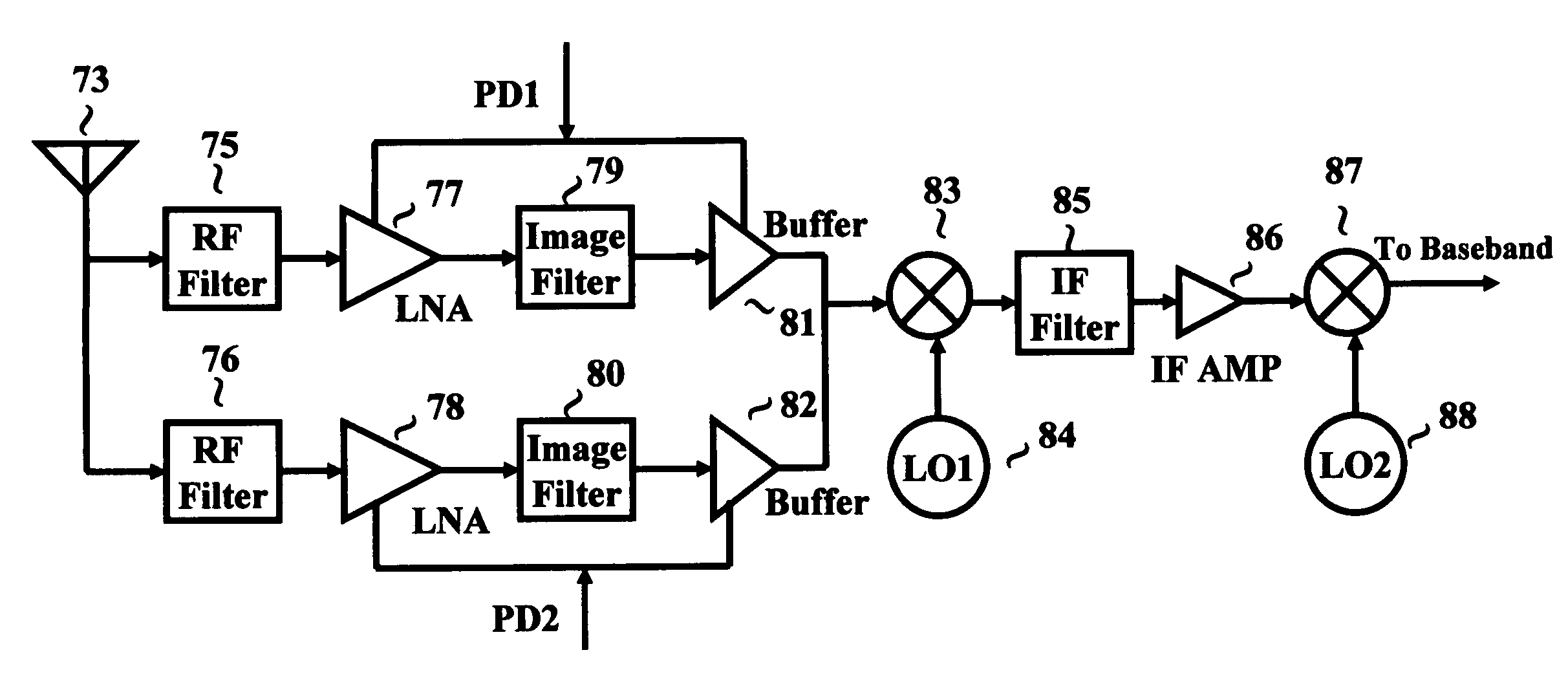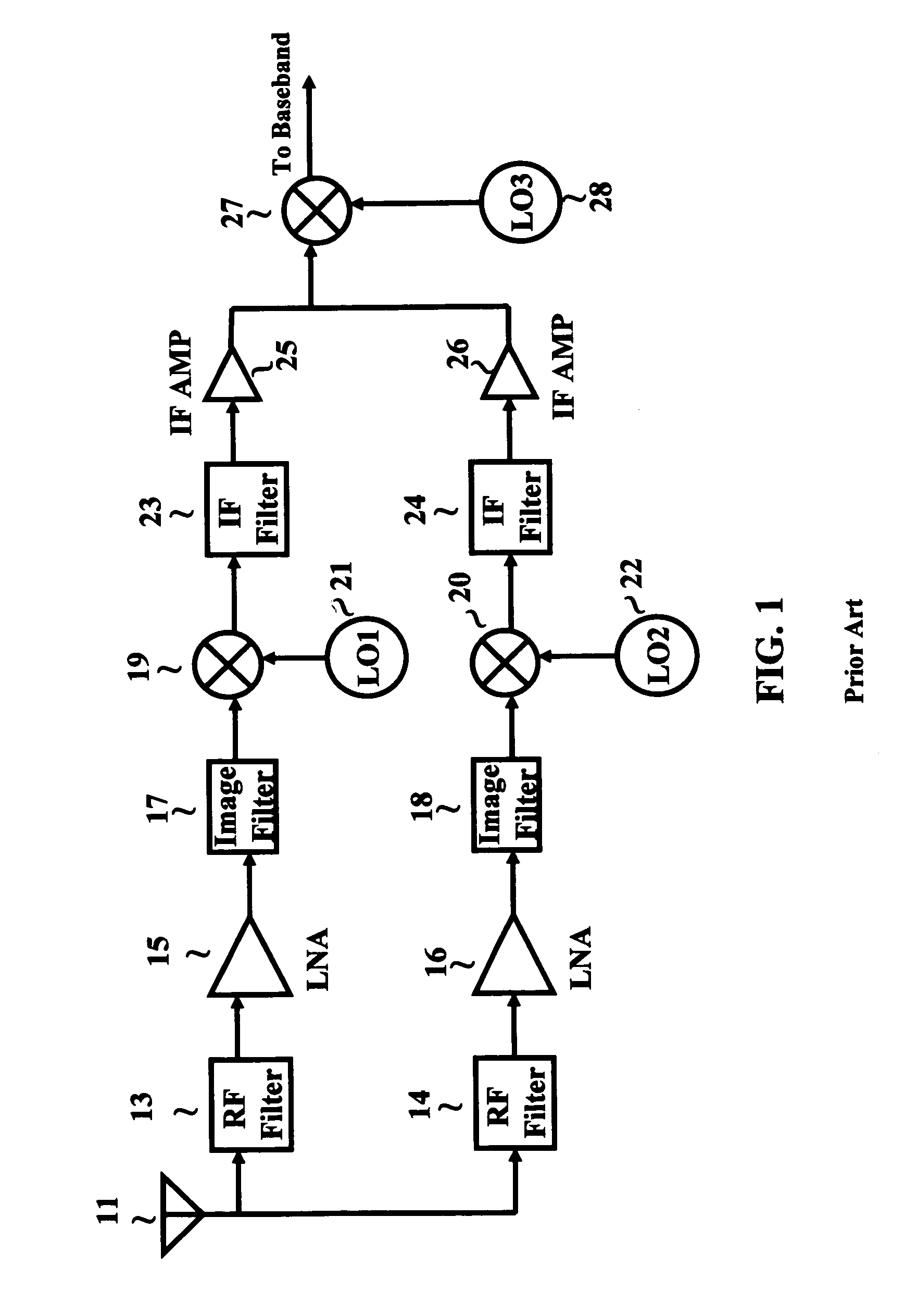Tunable multi-band receiver by on-chip selectable filtering
- Summary
- Abstract
- Description
- Claims
- Application Information
AI Technical Summary
Benefits of technology
Problems solved by technology
Method used
Image
Examples
Embodiment Construction
[0020]FIG. 3 is a block diagram of a dual-band RF communications receiver constructed in accordance with the principles of the present invention. It includes an antenna 73 for coupling a RF signal into the input of a bandpass RF filter, 75 and 76, for each frequency band. The output of the analog bandpass RF filters, 75 and 76, connects to the input of an LNA, 77 and 78, for each frequency band and whose output couples to the input of an image filter, 79 and 80, for each frequency band. The architecture differs from the tradition receiver at this point. Two buffers, 81 and 82, have outputs that are combined together. Each LNA, 77 and 78, and buffer, 81 and 82, have power down controls, PD1 and PD2, which enable one frequency band to be selected versus the other frequency band. The method of powering down the circuits enables high isolation that is not achievable in other switchable filters in the prior art U.S. Pat. Nos. 6,064,866[1] and 4,972,509[2]. The combined output is then fed...
PUM
 Login to View More
Login to View More Abstract
Description
Claims
Application Information
 Login to View More
Login to View More - R&D
- Intellectual Property
- Life Sciences
- Materials
- Tech Scout
- Unparalleled Data Quality
- Higher Quality Content
- 60% Fewer Hallucinations
Browse by: Latest US Patents, China's latest patents, Technical Efficacy Thesaurus, Application Domain, Technology Topic, Popular Technical Reports.
© 2025 PatSnap. All rights reserved.Legal|Privacy policy|Modern Slavery Act Transparency Statement|Sitemap|About US| Contact US: help@patsnap.com



